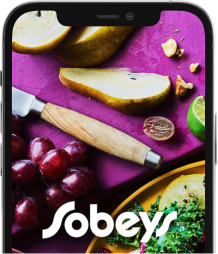Cooking isn’t some kind of magic; it’s one of the most important life skills you’ll ever learn. And it starts right here: knowing how to read a recipe, follow instructions, and prep ingredients and equipment. Whatever your experience level — whether you’re a parent teaching your kids how to cook or a newbie just starting out on your own — our expert tips and strategies will help build your abilities and ensure your finished dishes are as delicious as we intended them to be.
- Read the recipe. Take a good look at the recipe. Don’t just skim it; read it through from start to finish. As you read, visualize doing the steps, which will help when you’re prepping and prevent that dreaded yikes-I’m-missing-an-ingredient moment. A recipe is loaded with info, like tips and serving sizes, so you’ll know exactly how many people it will feed and whether there are any shortcuts you can take. Tip: Pay attention to the order in which ingredients are prepped: 1 cup (250 mL) chopped walnuts is not the same as 1 cup (250 mL) walnuts, chopped. In the first phrase, chopped walnuts are measured; in the second, whole walnuts are measured and then chopped.
- Figure out the timing. Check the “prep time” and “total time” listed at the top to be sure you have enough time to complete the recipe. Look for hints, such as the words “meanwhile” or “at the same time,” which indicate that two or more steps can happen simultaneously. Our recipes also show hands-off periods — look for phrases like “let rise,”“refrigerate until chilled” or “marinate for 30 min.,” which indicate moments when you can step away. Tip: Our prep times and total times don’t cover ingredient-list requirements, such as bringing refrigerated butter up to room temperature, so add those activities to your timetable.
- Plan ahead. Missing a prep instruction can leave you scrambling in the middle of a recipe. Keep your eyes peeled for time-consuming steps, such as using an already prepared ingredient (like cooked chicken or rice), thawing a frozen ingredient or preheating the oven. If you’re teaching young children to cook, remember that their powers of concentration can be limited, so start with an easy, kid-friendly recipe, like no-bake Popcorn, Fruit and Nut Trail Mix, which doesn’t take hours to complete. Tip: If you’re in need of a head start on a meal, look for make-ahead instructions, like those for our Make-Ahead Breakfast Enchiladas, which can be made and frozen, and then popped in the oven when guests arrive for brunch.
- Bone up on new techniques. If you’re trying out a skill for the first time, look up how-tos before you start, so there are no how-do-I-do-that?! moments when your recipe is underway. We have great guides to lots of different cooking skills, from baking to roasting to slow cooking. Tip: If you’re more of a visual learner, cooking videos are great! A good place to start with kids is our fun Meatball Panzerotti video.
- Mise-en-place is your friend. This French cooking term translates as “putting in place.” And it means exactly that: measuring ingredients, chopping food and prepping all your ingredients before you start cooking. It is a terrific way to get organized and avoid missing an ingredient or mixing up a step.
- Lay out your tools, too. Mise-en-place isn’t just for ingredients. Making sure you have the right pans and other equipment ready makes the cooking process go smoothly and quickly. Don’t forget an instant-read thermometer (cover meat, fish and poultry), special serving dishes, tongs and wraps (parchment paper, foil, plastic wrap or waxed paper). Tip: Don’t have the rightsize of pan for that cake you want to whip up? Check our Baking Pan Substitutions Guide, and you might be able to save yourself a trip to the kitchenware store.
- Make notes or highlight. Note any special prep instructions, and highlight cooking times or other important info you’ll be looking for as you cook. You can do this with pens on paper, or use the markup tools on your computer or tablet. For example, if you like our Chewy Molasses Ginger Cookies but your family prefers a crunchier result, highlight this tip at the end: “For crispier cookies, bake longer.” Include any shortcuts or tips you discover while you make the recipe —this will make it even easier next time!







